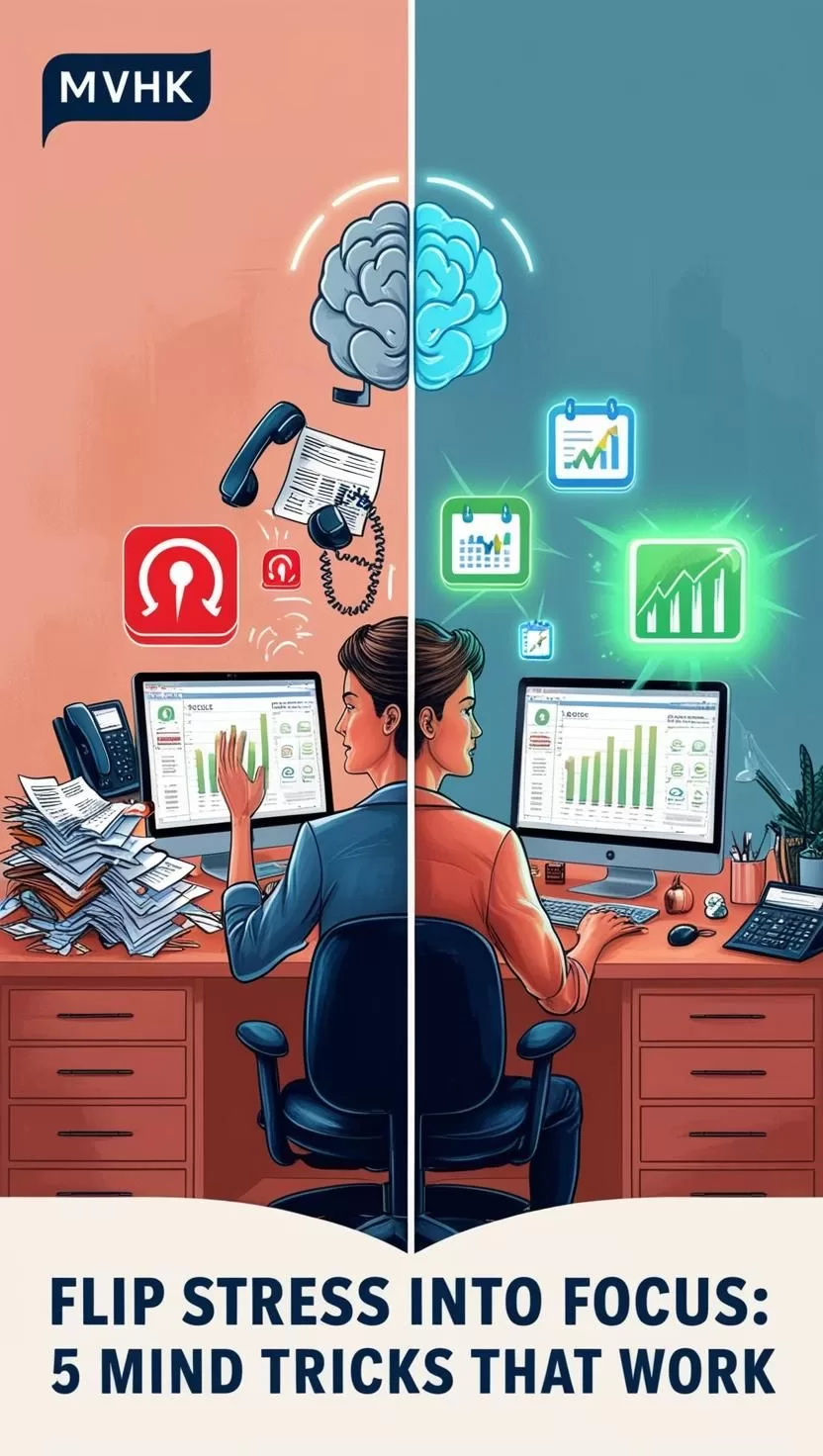Turning Stress Into an Advantage: How to Make Pressure Work for You
Stress isn’t always toxic. In fact, turning stress into an advantage may be the edge you need in high-demand environments. For busy professionals, reframing stress can lead to improved mental performance, better focus, and even long-term health benefits.
Let’s unpack how you can use this misunderstood tool to your benefit.
1️⃣ Understand the Source of Stress (and Redefine It)
H3: The Balance Between Demands and Resources
Stress emerges when there’s a mismatch between what’s expected of you and the resources you have to meet those demands. But the perception of that mismatch is often where the damage begins.
According to the American Psychological Association, it’s not the amount of stress, but how we interpret it, that determines the impact on our health.
H3: Recognize the Stress “Sweet Spot”
A certain level of stress—called eustress—can enhance performance. Think of athletes before a race or executives before a pitch. The right stress helps you focus and act with urgency.
2️⃣ Shift Your Mindset: Threat vs. Challenge
H3: The Science of Perception
A 2013 study published in the Journal of Experimental Psychology showed that reframing stress as a challenge (not a threat) led to better cognitive flexibility and decision-making.
How you label your stress shapes how your body responds to it.
H3: Ask Yourself: “Is This a Test or a Threat?”
Instead of “I’m going to fail,” try: “This is a moment to grow.” This small mental shift can regulate cortisol levels and unlock confidence in high-pressure settings.
3️⃣ Accept What You Can’t Control (Then Act Where You Can)
H3: The Control-Stress Connection
Trying to fix everything is exhausting. Instead, categorize what’s within your control and let go of the rest. This keeps your energy focused and stops burnout.
H3: Focus on Actionable Micro-Tasks
Break challenges into smaller tasks and attack what you can. You’ll feel progress, not paralysis.
4️⃣ Build Stress Tolerance Like a Muscle
H3: Stress Inoculation Training (SIT)
This method teaches people to gradually face stressors and learn coping strategies. Over time, you build mental stamina—just like strength training.
H3: Real-Life Example
Busy professionals who practice regular mindfulness and breathwork report less burnout and greater mental clarity. One study from Harvard Health even shows 27% improved productivity after 8 weeks of meditation.
5️⃣ Adjust the Demand-Resource Equation
H3: Boost Your Internal Resources
Sleep, nutrition, hydration, and mental resets (like walking or box breathing) are all ways to “fuel up” before demands hit.
H3: Reduce the Pressure Where Possible
Delegate, reschedule, or streamline. Sometimes the smartest move is subtracting from the to-do list.
✅ Conclusion: How to Get Started Today
Stress doesn’t have to own you. With the right perception, preparation, and strategy, turning stress into an advantage becomes less about survival—and more about thriving.
Start small: next time you feel the pressure rising, pause. Reframe. And step forward with control.
📚 Frequently Asked Questions about Turning Stress Into an Advantage
Can stress really improve performance?
Yes, moderate stress (eustress) sharpens attention and increases motivation. It becomes harmful only when chronic or overwhelming.
What’s the best way to reframe stress fast?
Use mindset labels: tell yourself it’s a “challenge,” not a threat. Pair that with breathwork to calm the body.
Are there daily habits that build stress resilience?
Yes—regular sleep, daily movement, mindful breaks, and journaling are proven to raise your stress tolerance threshold.






